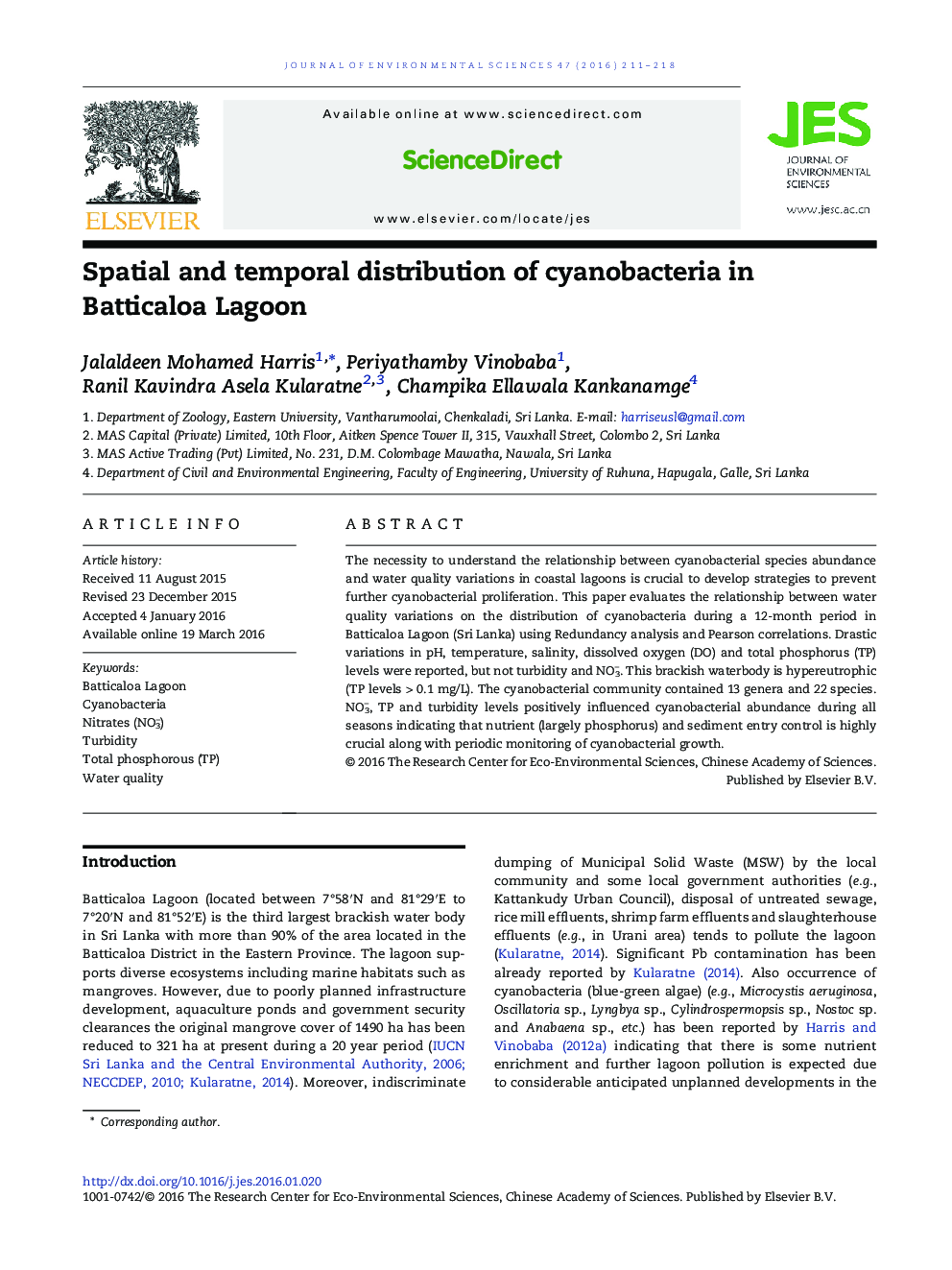| Article ID | Journal | Published Year | Pages | File Type |
|---|---|---|---|---|
| 4453616 | Journal of Environmental Sciences | 2016 | 8 Pages |
The necessity to understand the relationship between cyanobacterial species abundance and water quality variations in coastal lagoons is crucial to develop strategies to prevent further cyanobacterial proliferation. This paper evaluates the relationship between water quality variations on the distribution of cyanobacteria during a 12-month period in Batticaloa Lagoon (Sri Lanka) using Redundancy analysis and Pearson correlations. Drastic variations in pH, temperature, salinity, dissolved oxygen (DO) and total phosphorus (TP) levels were reported, but not turbidity and NO3−. This brackish waterbody is hypereutrophic (TP levels > 0.1 mg/L). The cyanobacterial community contained 13 genera and 22 species. NO3−, TP and turbidity levels positively influenced cyanobacterial abundance during all seasons indicating that nutrient (largely phosphorus) and sediment entry control is highly crucial along with periodic monitoring of cyanobacterial growth.
Graphical abstractFigure optionsDownload full-size imageDownload as PowerPoint slide
